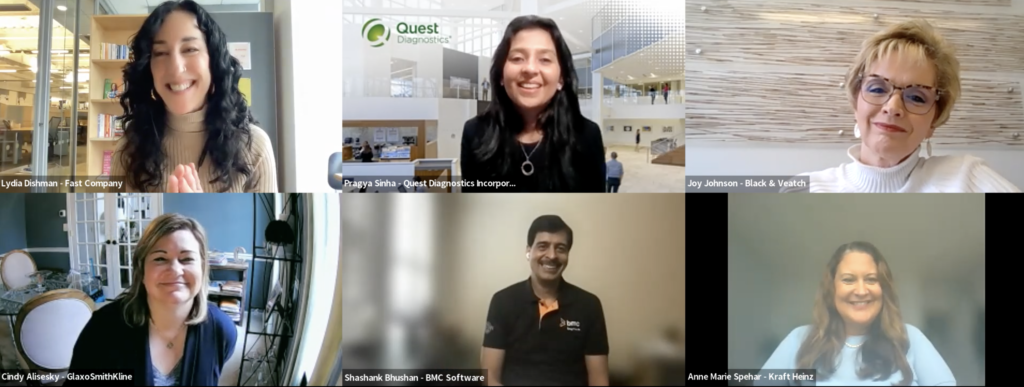Finding New Career Paths in a Transformed Workplace


For a long time, we’ve thought about the career path like a ladder—one way up, at one company, ascending as the years go by. But as workplaces have transformed, the ladder went with it. Ask experts what they think of the modern-day career path, and they’re more likely to compare it to a jungle gym.
That shift—from ladder to jungle gym—was the focus of a panel conversation titled, “Paving New Career Paths in a Transformed Workplace,” part of From Day One's April virtual conference on the human side of digital transformation. Experts discussed learning opportunities that can be created by relying on new technology, as well as taking on a more project-oriented approach to jobs.
As moderator Lydia Dishman pointed out, the time is ripe for rethinking the career path. A recent LinkedIn survey found that employees who see good opportunities to learn and grow are nearly three times more likely to be engaged than those who don’t. Ninety-one percent of employees say it’s very or extremely important for their manager to encourage learning and experimentation, while 84% of managers feel that this can help close the skills gap on their teams.
Dishman noted that there was once stigma with lateral career moves. “I don’t think there’s stigma any longer about going sideways or taking a step back,” said Shashank Bhushan, chief talent-development architect and VP of HR at BMC Software. “The transition that has happened, and my advice to people, would be to be focused on what skill you have and where you want to go with it.”

How to develop those skills? “We do not have a set learning program for all individuals—we truly have a differentiated development-planning process,” said Pragya Sinha, the senior director and HR business partner of clinical franchises and marketing at Quest Diagnostics. That means one-on-one career conversations with employees, understanding their aspirations and strengths, and then developing a holistic, personalized plan of experience- and relationship-based learning. The company has customized web-based training, she added.
Cindy Alisesky, VP of HR transformation for GlaxoSmithKline, said her company is mindful of how technology is not just shaping career tracks, but also taking over some roles. “We’re encouraging people to find those niche skills and opportunities where human intervention and interaction will always be needed,” she said. “That requires a level of focus that takes the whole concept of career path and squashes it.”
Joy Johnson, chief operating officer for HR for the engineering and construction company Black & Veatch, provided a real-world example of employee education, which came after the company stopped designing coal-burning power plants and shifted to renewable projects. “The design for a solar field is very different from designing a coal plant,” she said. “We’ve been very successful and have lost very few of our professionals by offering reskilling and teaching them how to do the design for these new technologies.” Education has happened all on video, with managers recording on their phones and no in-person training.
Kraft Heinz, the food giant, is engaging employees through large-scale, transformational projects. “We identify ‘change champions’ to help with those projects and train others,” said Anne Marie Spehar, the company’s global organizational change-management practice leader. “We’re really creating this network as we’re going through this transformation while we’re doing business.”
At Quest Diagnostics, employees are assigned to projects for at least six months. “We dedicate them to the project so they can continue to learn, develop, and deliver during that time frame,” Sinha said.
As far as gauging talent, panelists said they’ve taken a step back from methods like long training sessions and complex assessments. “We’ve attempted to simplify that approach and take it down to a level that is much more manageable, easy, and it’s really back to managers having conversations with people,” said Alisesky. These honest conversations are part of a larger culture shift in the company.
Bhushan called it “building a culture of conversations in the organization,” not just between managers and employees, but across all employees. “We have to elevate that conversation around your goal to our goal, to the company’s goals. And we have to ask the question: 'What’s in it for you?'” he said. “As organizations reinvent those conversations, employees can get excited about the larger vision and what can be accomplished from a greater and personal good.”
Emily Nonko is a Brooklyn, NY-based reporter who writes about real estate, architecture, urbanism and design. Her work has appeared in the Wall Street Journal, New York magazine, Curbed and other publications.
The From Day One Newsletter is a monthly roundup of articles, features, and editorials on innovative ways for companies to forge stronger relationships with their employees, customers, and communities.